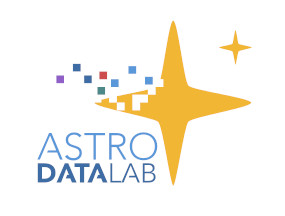dl.helpers.crossmatch module¶
Data Lab helpers for (local) positional cross-matching.
- dl.helpers.crossmatch.xmatch(ra1, dec1, ra2, dec2, maxdist=None, units='deg', method='astropy', **kwargs)[source]¶
Cross-match two sets of ra & dec coordinates locally (i.e. all coordinates are in RAM).
The function will search for counterparts of ra1/dec1 coordinates in the in ra2/dec2 coordinate set, i.e. one can consider ra2/dec2 to be the catalog that will be searched.
- Parameters:
ra1 (1-d array-like sequences) – RA and declination of first coordinate set, in units of units
dec1 (1-d array-like sequences) – RA and declination of first coordinate set, in units of units
ra2 (1-d array-like sequences) – RA and declination of second coordinate set, in units of units
dec2 (1-d array-like sequences) – RA and declination of second coordinate set, in units of units
maxdist (float or None) – If not None, then it is the maximum angular distance (in units of units) to be considered. All distances greater than that will be considered non-matches. If None, then all ra1/dec1 will have matches in ra2/dec2.
units (str) – Units of ra1, dec1, ra2, dec2. Default: ‘deg’ (decimal degrees).
method (str) – Currently only astropy’s
match_to_catalog_sky()method is supported, i.e. the default ‘astropy’.nthneighbor (int, optional) – If
method='astropy'. Which closest neighbor to search for. Typically1is desired here, as that is correct for matching one set of coordinates to another. The next likely use case is2, for matching a coordinate catalog against itself (1is inappropriate because each point will find itself as the closest match).
- Returns:
idx (1-d array) – Index values of the ra1/dec1 counterparts found in ra2/dec2. Thus ra2[idx], dec2[idx] will select from the ra2/dec2 catalog the matched counterparts of the ra1/dec1 coordinate pairs.
If maxdist was not None but a number instead, then ‘idx’ only contains the objects matched up to the maxdist radius.
dist2d (1-d array) – The angular distances of the matches found in the ra2/dec2 catalog. In units of units.
If maxdist was not None but a number instead, then ‘dist2d’ only contains the objects matched up to the maxdist radius.
